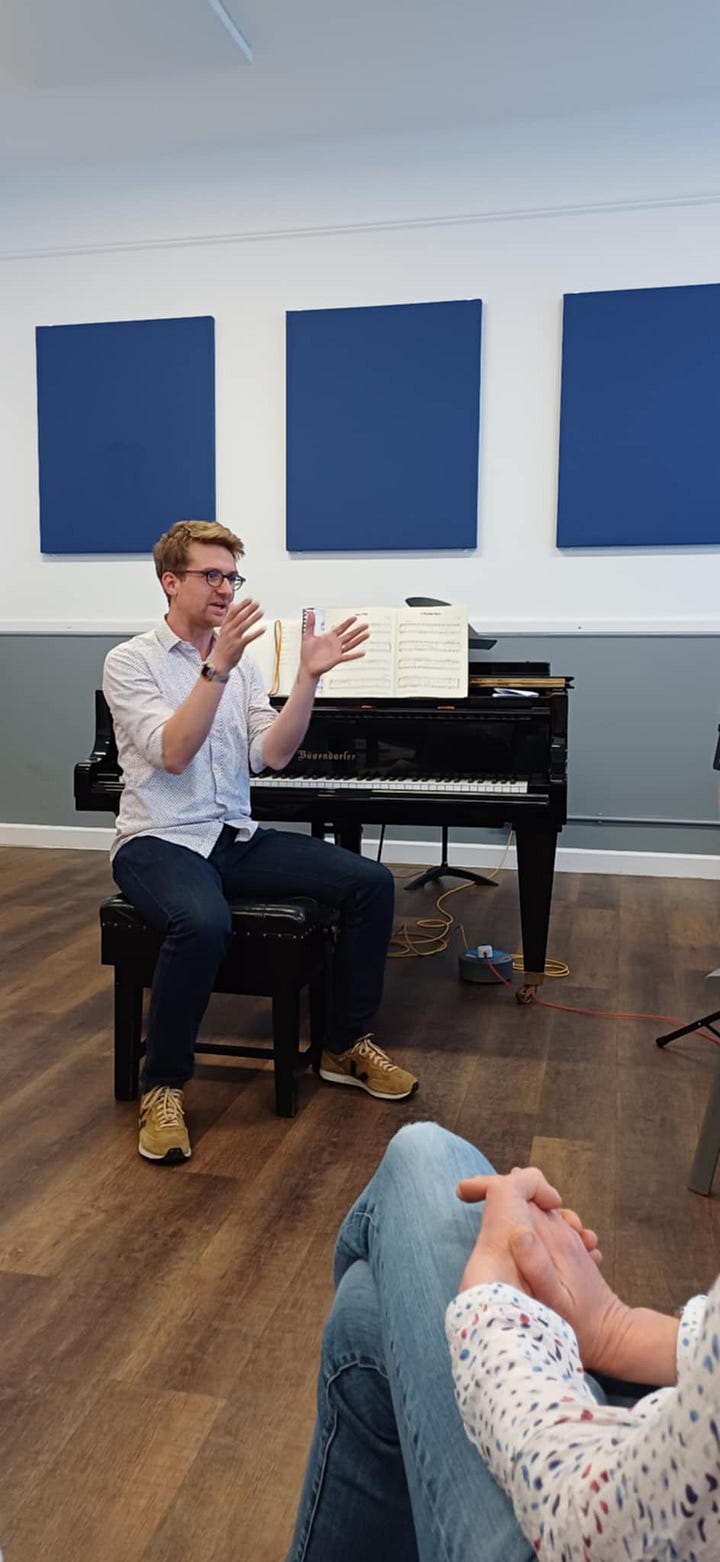The Mozart Method
How Wolfgang Amadeus used variations to learn creativity, and how we can too
This is a post for those of you curious about my Mozart Method workshop. I recently delivered it at the Piano Teacher’s Course at the Purcell School in the UK.


Why Mozart?
There’s a wonderful quote from Nannerl Mozart about her four-year-old brother Wolfgang Amadeus:
“using as a model what he had learned, he would then improvise on the keyboard.”*
This is such an instructive model for pedagogues.
When students improvise variations on pieces they can already play, they:
have fun
deepen their understanding of music theory
deepen their love for the original piece
learn about creativity
In the Mozart Method, the teacher presents the student with creative options, but does not tell them what creative changes they should make. Why is this crucial?
Artists / Artisans
Eric Bluestine’s wonderful book The Ways Children Learn Music quotes a lecture from pedagogue Bennet Reimer, who said:
As it is now, in most performance situations in the schools, most, if not all, the artistic decisions are made by the teacher. So the teacher gets to be an artist, while the students only get to be artisans, that is, workers who carry out an artist’s instructions—like the brick layers who build the walls of a beautiful building, or the welders who put together a steel sculpture. These people make no artistic decisions, which is why they are not artists. Too many of our kids in performing groups are not given the experience of being musical artists, which is one important reasons that many of them drop performance when they graduate from high school.
Reimer was writing about teaching music in school, but many piano teachers will recognise what he’s talking about.
There are times when we do need to act as the artist and have the student act as artisan. Modelling high quality music making is an essential part of our work.
Nevertheless, we also need to actively create opportunities for our students to take over artistic control.
Doing so gives them ownership. It increases their self-worth. It deepens their knowledge. It makes them more fully realise themselves as human.
The Mozart Method gives us that opportunity.
Historical justification
The Mozart Method is a form of Variation.
Variation is a compositional approach that has a very fine pedigree!
That’s part of what I find so appealing about the Mozart Method: it gives us permission to get creative with classical music.
When teaching pop or jazz piano, some form of creativity is hard to avoid, whether it’s realising a lead sheet or improvising a solo.
Teachers with a classical focus, however, often don’t have a framework for teaching creativity.
This is an oversight. Creativity was part of so much of the classical tradition. Besides Mozart’s example, we know that many of our classical heroes were fantastic improvisers (Bach and Chopin are two obvious examples).
We also know that improvisation was a routine part of music making throughout the Baroque and Classical and early Romantic period, whether you were famous or not. There are many documented examples of improvisation competitions—indeed, Beethoven famously participated in one!
How it works
The Mozart Method is a simple process:
learn the piece
identify something that can be varied
play the piece with the variation
These variations can become very complex if you want them to be, but in most teaching situations, it’s most effective to keep them fairly simple.
In my Mozart Method workshop I outline some of the many ways we can create simple variations. Here’s a slide:
And here’s a video of the slides where I show you how I apply the rhythm ideas to Giga by Samuel Arnold, a piece on the current MTB Grade 1 syllabus.
I demonstrate how to apply pitch, harmonic and metre changes to pieces, then I get participants to create their own simple variations.
We then explore how you could use this in lessons, before discussing how you might incorporate it into a longer-term teaching plan.
It’s an approach
In that last sentence I’ve deliberately used the conditional tense: could, might.
That’s because the Mozart Method is an approach. It’s not prescriptive. You can do it how you like.
You can apply it to any pieces you might be teaching. You can spend as much or as little lesson time doing it as you want.
The point of the Mozart Method is to help you and your students to spot creative opportunities.
It doesn’t tell you exactly what to do.
It just opens up possibility.
It’s fun!
It has a serious pedagogical purpose.
The missing piece
Many classical teachers don’t know where to get started with teaching creativity. The Mozart Method is a wonderful introduction. I love teaching it!
If you are a teacher who’d like to learn it, please send me an email. I would be happy to help.
Piano Creativity: Mentoring for Teachers
I love helping my students get creative, but I particularly love helping teachers to get more creative in their lessons—especially if they’re nervous about it!
If you’re an educational provider who would like to include the Mozart Method in your course offering, get in touch to explore options.





What a creative idea. Having once taught ABRSM Jazz syllabus, this resonated; in the classical sense. I love playing Mozart so will endeavour to try myself. Thank you.